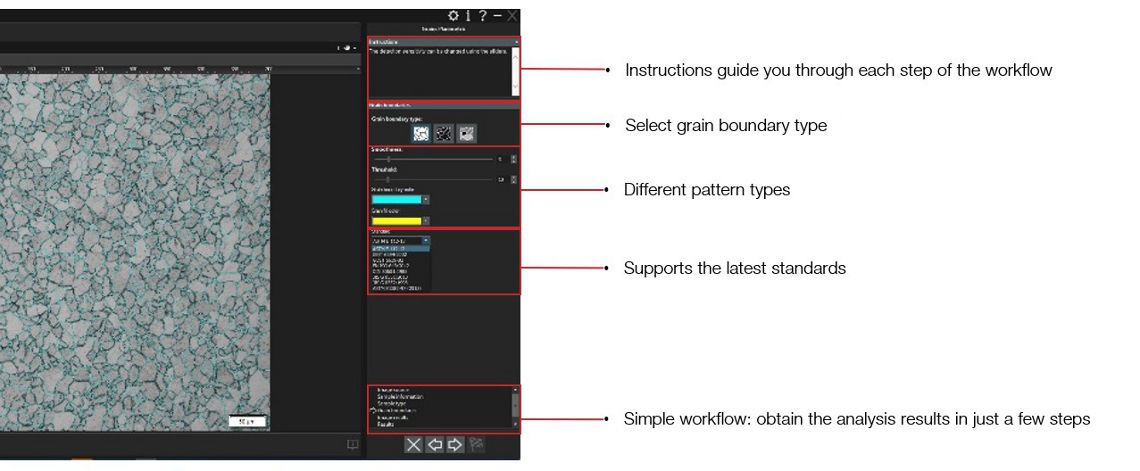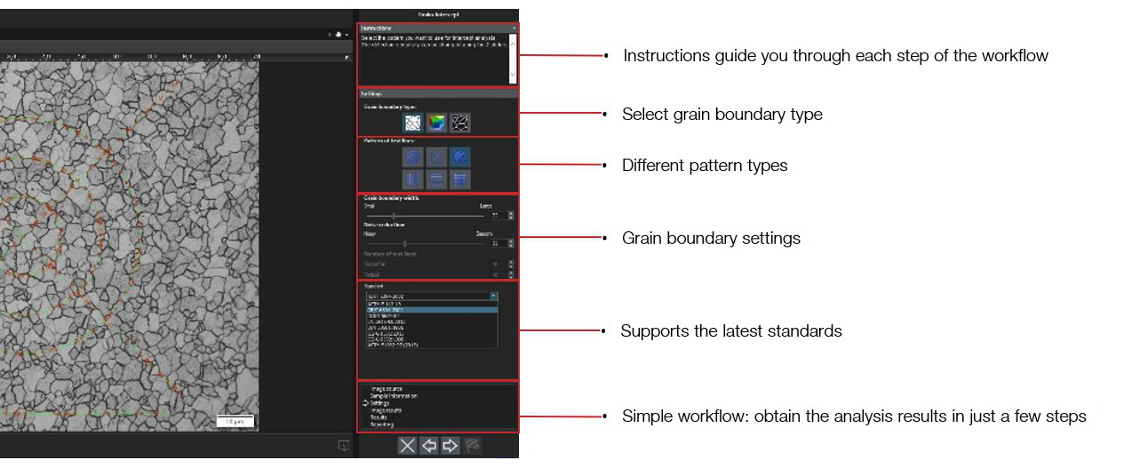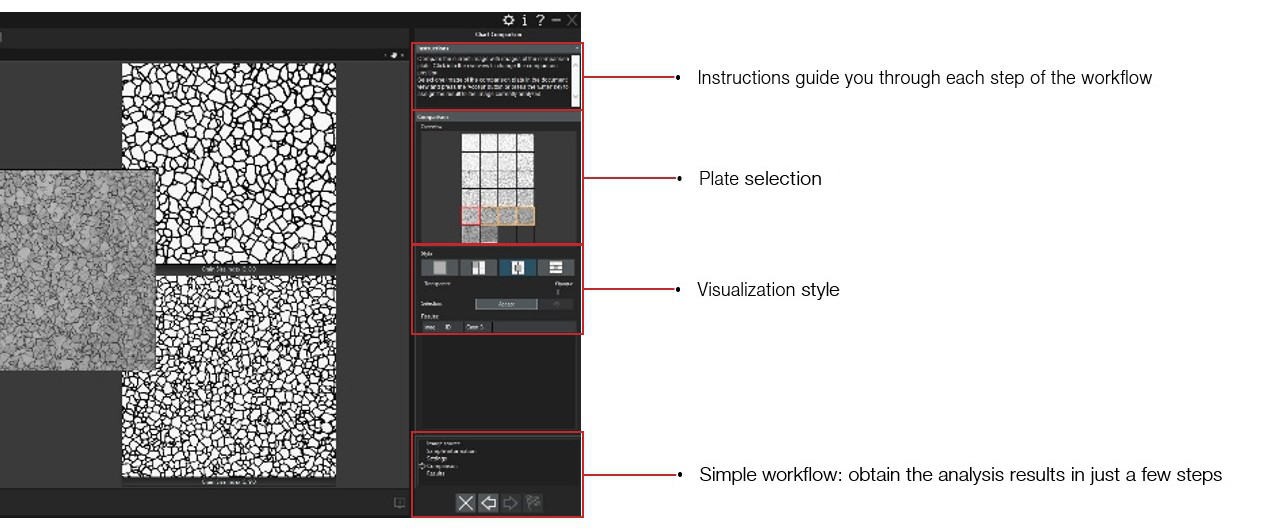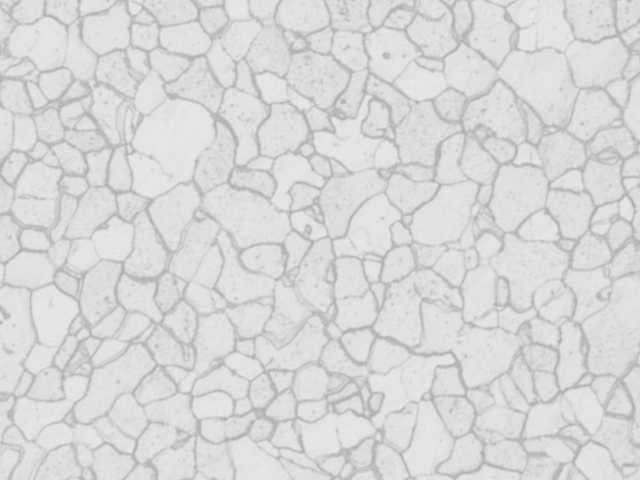- Home
- Microscope Solutions for Materialography
- Grain Size Solutions
For metals and ceramics, grain size is one of the most significant metallographic measurements due to its direct effect on mechanical properties. Calculate the grain size number using standardized methods, such as:
Grain Sizing Using the Jeffries Planimetric Method
Measurement procedure:
- Select an image (live or already recorded)
- Select the Grain Planimetric material solution
- The software calculates the average grain size (NA) according to formula and test circle (PRECiV software uses the whole frame instead of a test circle)
- The software calculates the surface of all grains included in the image and gives a distribution
- The software also provides results on bi-constituents microstructures
Solution highlights:
- Precise results (+/- 0.1 G) due to the individual calculation of every single grain
- The output is a grain size distribution, which is useful for multiphase grain microstructures
- Method works well on austenitic steel and untwined grains
- Software uses the whole image instead of a test circle
- Includes the latest version of commonly used standards in academic and industrial environments, such as ASTM E112, EN ISO 643, DIN 50601, and more

Grain Sizing Using the Heyn Intercept Method
Measurement procedure:
- Select an image (live or already recorded)
- Select the Grain Intercept solution
- Can edit the intercept points
- Software automatically counts the number of grains intercepted (N) and number of grain boundaries intercepted (P) by the pattern
- Software automatically calculates the value LT
- Software gives a single value G
Solution highlights:
- Precise results (+/- 0.1 G) due to the averaging on the pattern length
- The output is a mean grain size value
- The precision is a function of the number of measured images
- The software can provide an elongation value for non-equiaxed microstructures
- Includes the latest version of commonly used standards in academic and industrial environments

Grain Sizing Using the Chart Comparison Method
Common grain size measurements include grains per unit area/volume, average diameter, or grain size number. The grain size number can be calculated or compared to standardized grain size charts.
Measurement procedure:
- Select an image (live or stored image)
- Select the chart navigator
- Select the corresponding chart manually
- The software averages the selected values and gives a unique value
- PRECiV software automatically corrects for the difference in magnification
- The precision of the method is (+/- 1G)

Need assistance?
Not available in your country.
Not available in your country.

